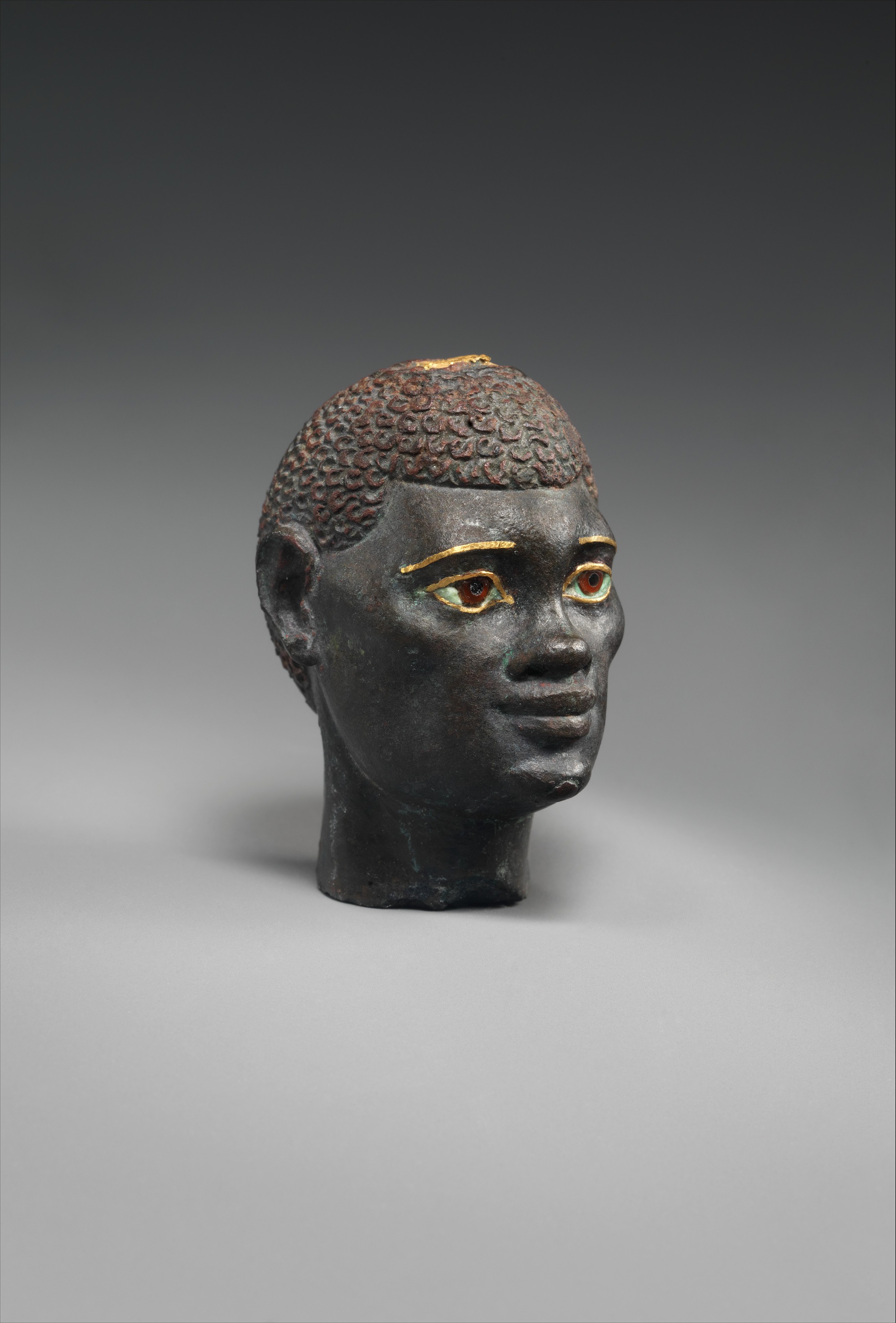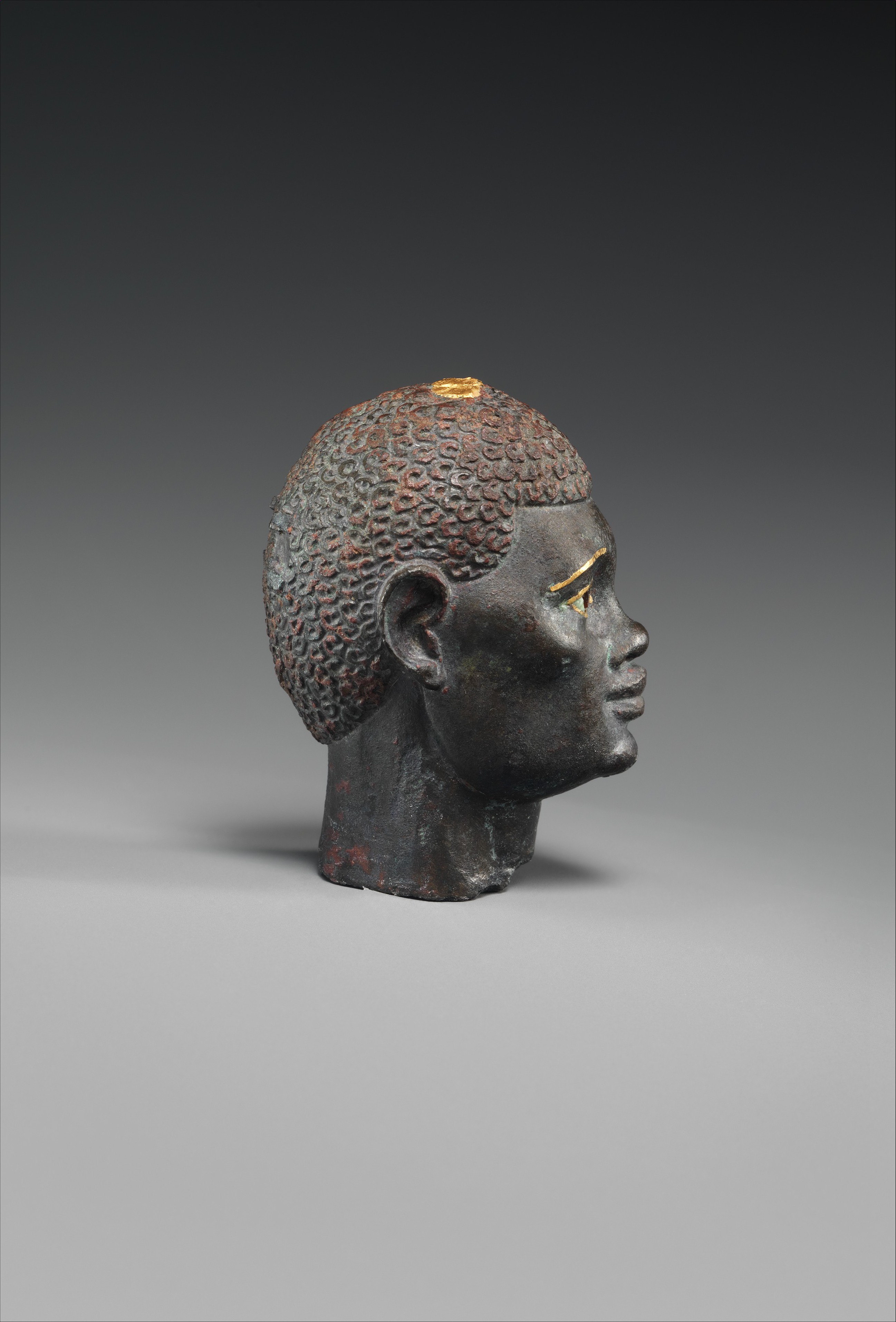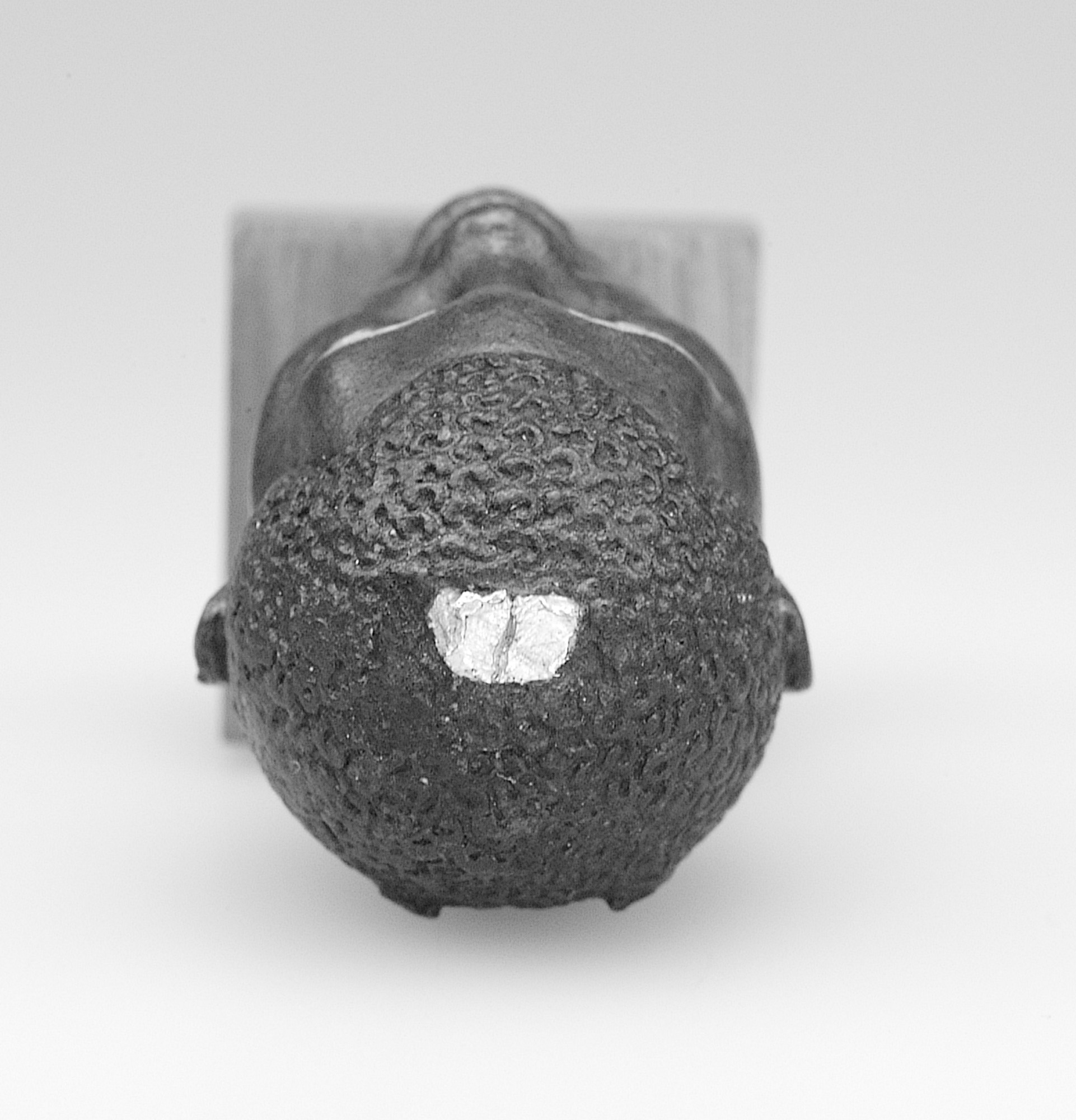Head of an "Ethiopian" depicted in Hellenistic mode
Ptolemaic Period
Black Africans were considered distant and exotic and were termed 'Ethiopians' by the ancient Greeks when Greek artists formulated a distinct iconography for these peoples. This was well before the cosmopolitan Hellenistic period, when regular interaction with African realms like Egypt and Nubia had become the norm. (See the Timeline of Art History essay Africans in Ancient Greek Art)
This beautiful head of an "Ethiopian" was created as an attachment for some luxurious object suited to a Hellenistic Greek milieu like that of Alexandria. A gold plug remains in the top of the head, and on the back twin loops were broken away. Possibly the head was part of a richly ornamented serving dish: for example, a head with a loop and ring decorates the rim next to the handle on one elaborate dish from Pompeii.
Due to rights restrictions, this image cannot be enlarged, viewed at full screen, or downloaded.
This artwork is meant to be viewed from right to left. Scroll left to view more.







